
Andrea Taormina didn’t follow a traditional path to the kitchen. The Palermo-born chef moved to New York City when he was 11, and grew up imagining that that he would be an artist. He accidentally fell in love with hospitality instead, taking what he recognizes as an unconventional route to executive chef status—working front of house at bellweathers like Pastis and Morandi before starting his own catering company and restaurant, before eventually landing at the Bowery Hotel.
He may be feeding 500 people a night, but for Taormina, food is still emotional. “I consider myself a traditionalist, in terms of cooking,” he said. “I love stories and making connections with the past.” Taormina’s menus also conjure the familial home cooking of his native Sicily, embracing the constraints that come with that approach. “These days it’s all, ‘Farm-to-table this, farm-to-table that,'” he muses. “Back in the ’80s in Sicily, that was the only way to live. So for me, every season has a connection with a vegetable or fruit.” As the last wisps of summer flutter around us, Taormina shares a seasonal menu of Italian favorites based to serve at one last sun-drenched evening gathering.
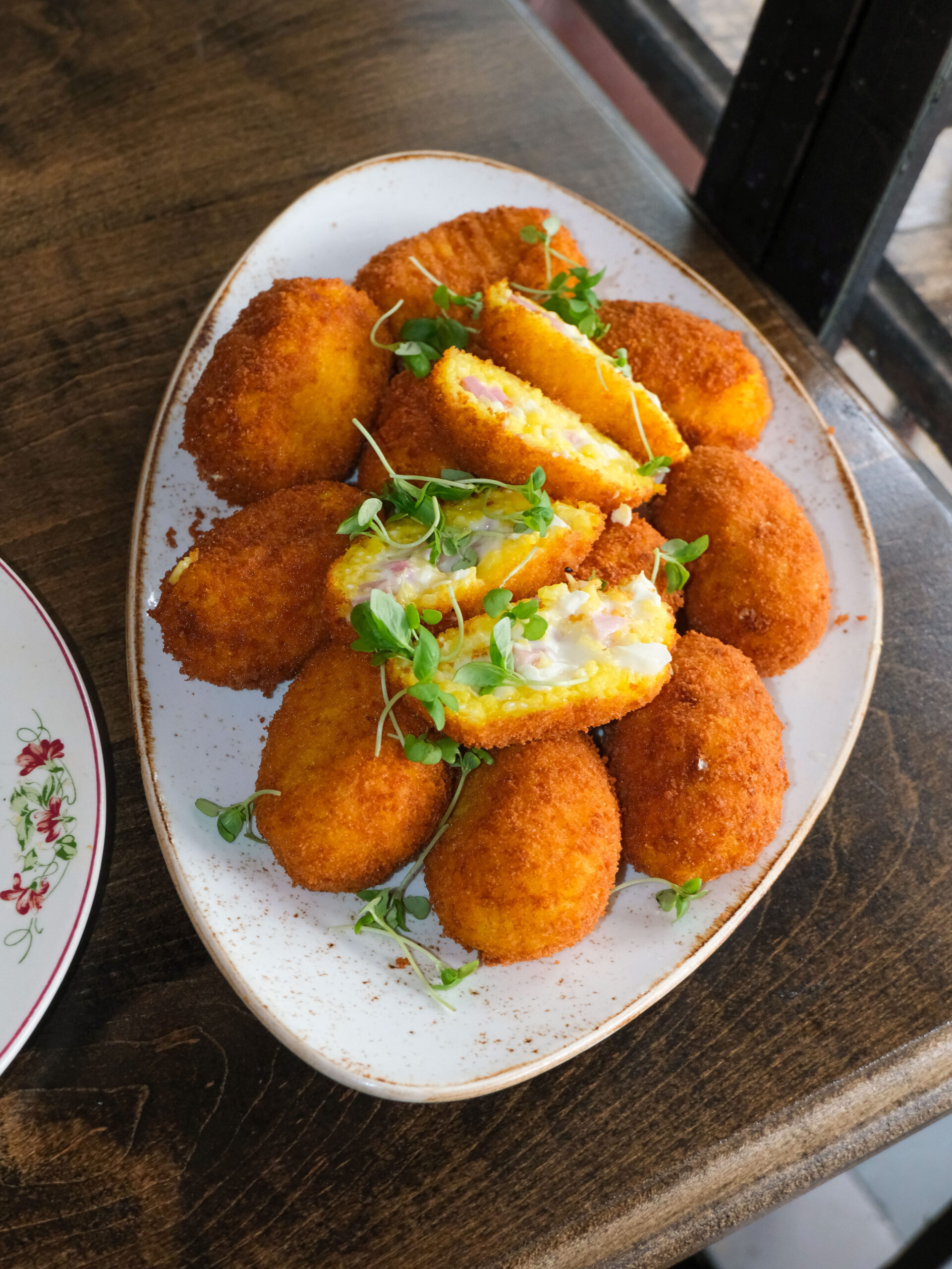
ANTIPASTI: EGGPLANT CAPONATA AND ARANCINI
“Sicilian food is influenced by North African cuisine, so there’s a lot of sweet and sour flavors, things which are not necessarily considered Italian. Caponata, for example, is a cold eggplant salad with a sweet and sour taste, eaten with a nice crisp crostino. It will be perfect for a late summer evening.
Arancini are also very popular today, but the dish actually dates back to the 9th century. Arab sailors brought it over because these pockets of rice and filling were an easy way to get protein without having to cook. When they arrived in Sicily, arancini caught on, and the Sicilians transformed it into a daily staple. My favorite is a saffron arancini filled with bechamel and prosciutto cotto—that brings me back to my childhood.
For the caponata, you’ll need to get Italian or Japanese eggplants at your local farmers’ market. There are so many wonderful farmers’ markets here in New York City. For me, farmers’ markets are really a place to go and become inspired. You should take the best three things that you can find at a farmers market every time: the most beautiful fish, the most beautiful vegetable, and the most beautiful fruit. Then make your dinner based on that.”
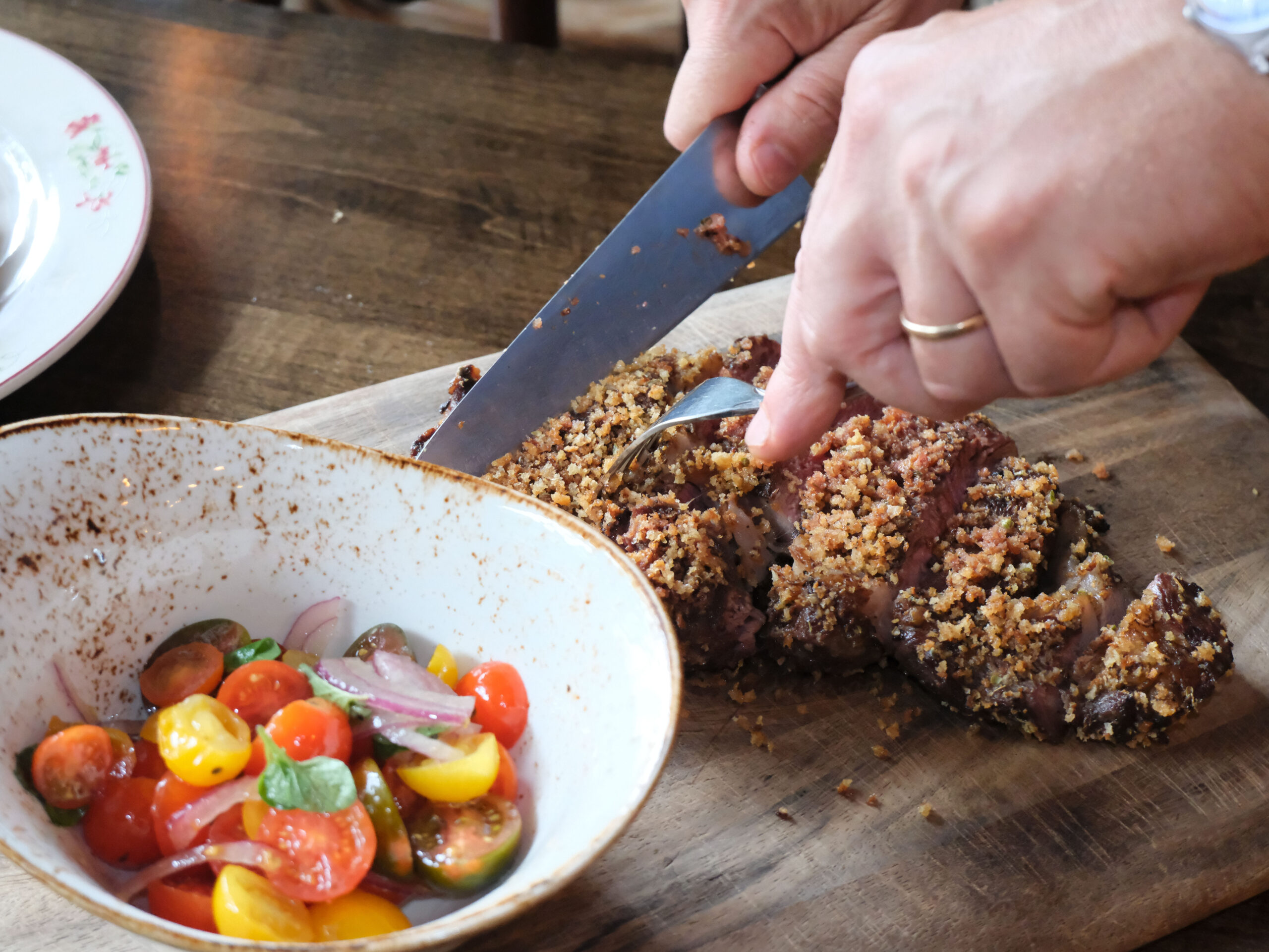
SECONDO: COTOLETTA ALLA PALERMITANA
“The main course, of course, is Palermo-style steak. It’s a traditional ribeye, which is sliced and smothered with bread crumbs. Sicilians love bread, by the way. There’s a story that, back when the Spanish were ruling Palermo, they decided to reduce the standard size of a bread loaf but still charge the same price. Of course, the Sicilians revolted. The dish is served with a light tomato salad with red onions and oregano, which is a perfect combination. I would serve that prepared over an open barbecue for a last hint of that summer taste.
You need a good butcher where I can get incredible quality steak, like Dickinson Farmstand in Chelsea Market. They’ll have a traditional cut and traditional meat.”
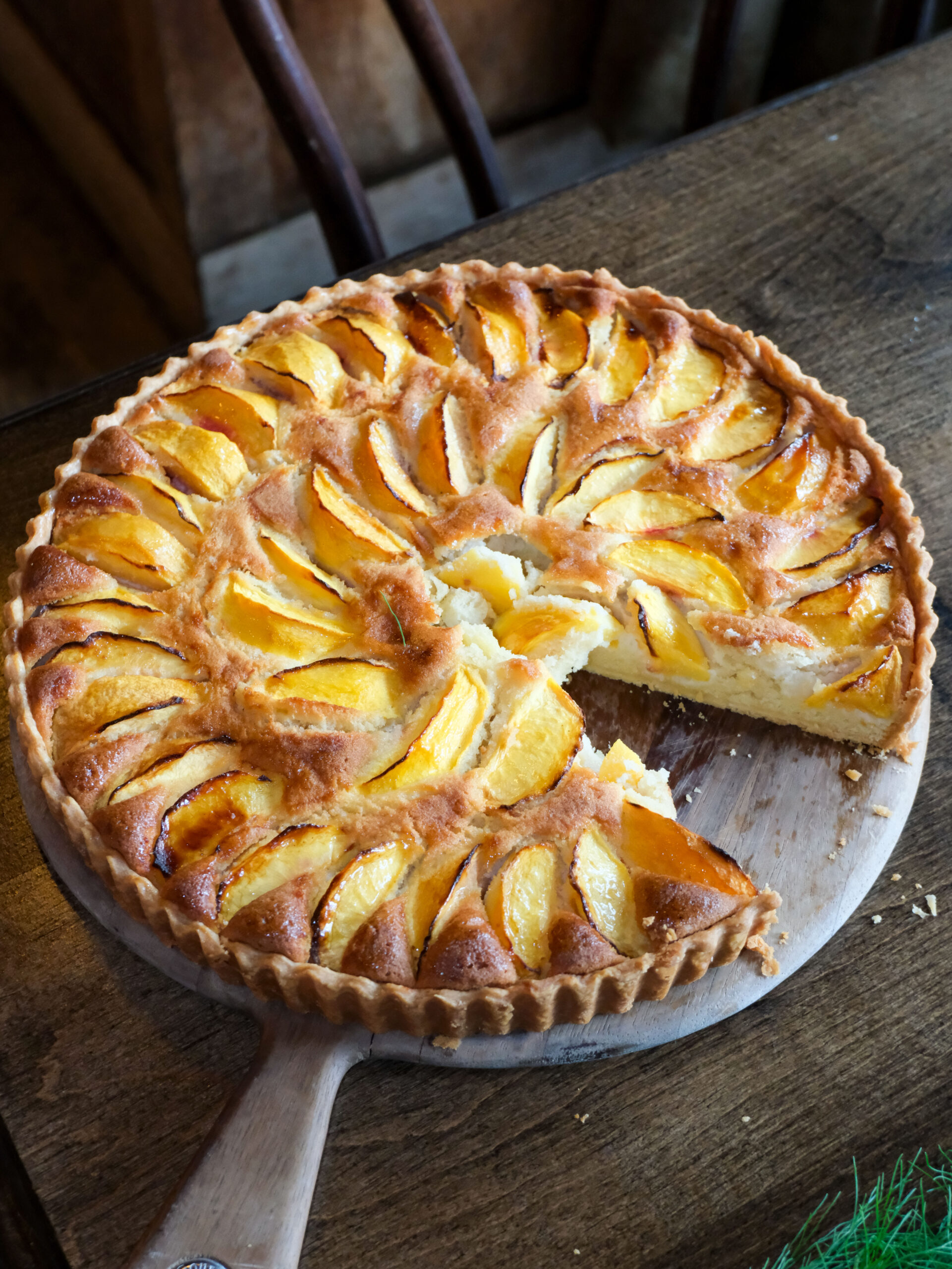
DOLCE: CROSTATA DI FRUTTA
“Stone fruit is one of my favorite things about this season—peaches, plums, cherries, and nectarines. I usually put them in the fridge because I like them cold, but I also make super simple tarts with them. I’m not a baker, but you can whip one up without measuring, which I love. You just put flour, sugar, ice-cold butter, and salt into the food processor. Then you lay it out on a sheet pan and layer in the fruit, whether it’s peaches or cherries or plums, and a little sugar. Then you put it in the oven. Delicious.
When it comes out, you have to let it rest. Then eat it with some creme fraîche, yogurt, or vanilla ice cream. I make it for my family all the time when I’m home.”
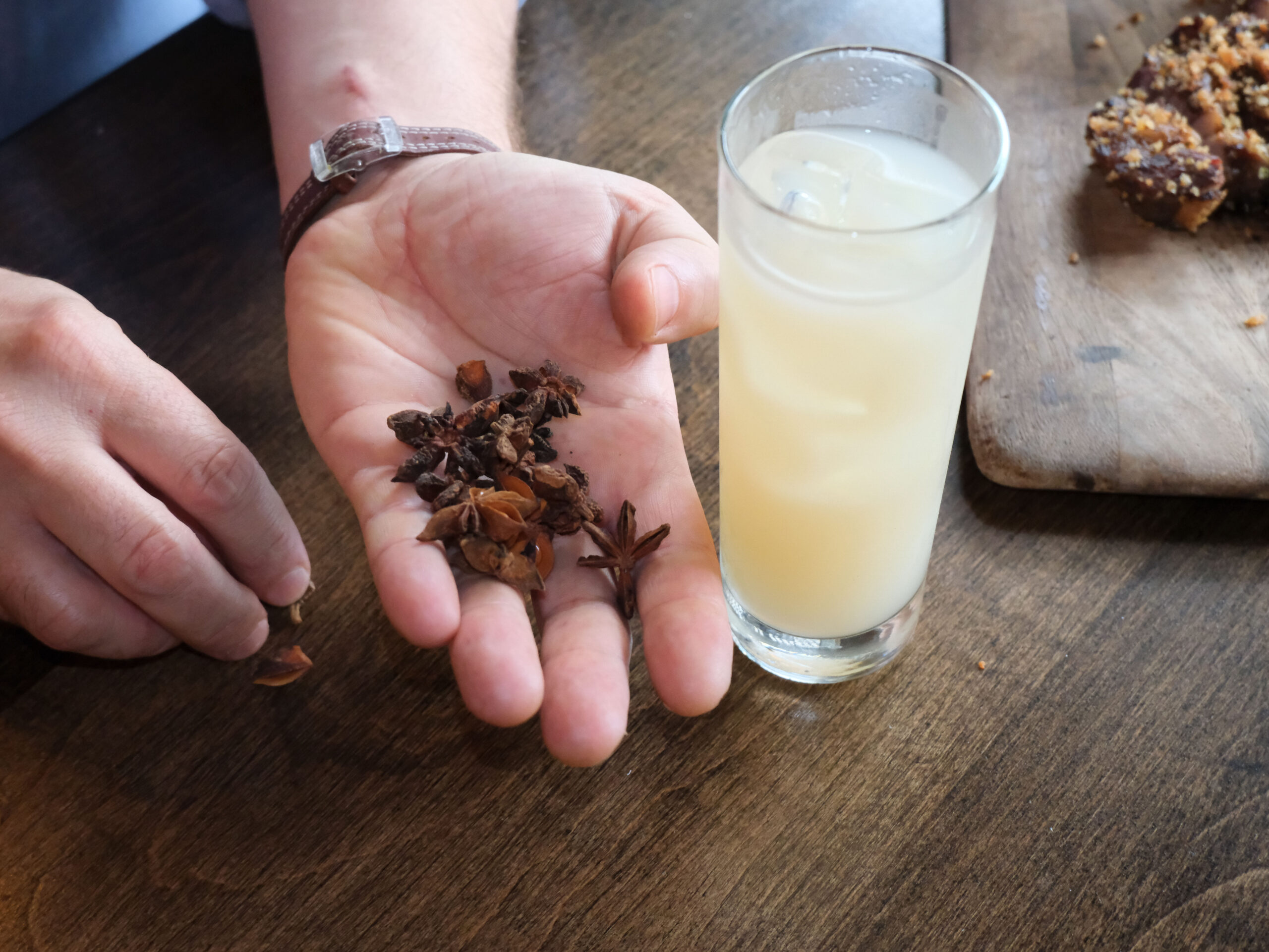
BIBITE: ACQUA I ZAMMÙ
“In Sicily, we have an anisette brand called Tutone Anice Unico, similar to Pastis or Pernod, that’s been around since the early 1800s. The liqueur has a little dropper for you to pour the anisette over ice water. It’s slightly alcoholic and very refreshing.
I remember as a child, my parents used to drink it in the summertime, and I used to run around with other kids getting all sweaty and so thirsty and begging for some to drink. They would just put two or three drops, so I got a taste for this flavor as a child and fell in love with it. I would serve this as a very simple cocktail with just iced water and a fennel frond for garnish.
For me, these dishes represent the very last moments of summer. I remember eating them all season long as a child in Sicily, and as the season started to change to fall, I would get so excited about the new fruits and vegetables that were about to come out. That’s the quintessential way of eating well.”


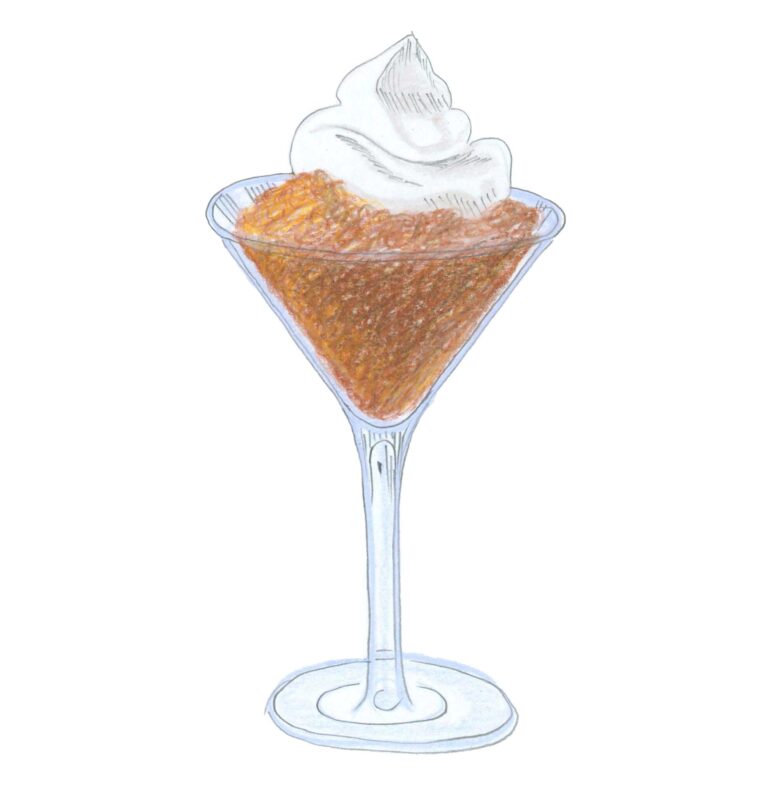
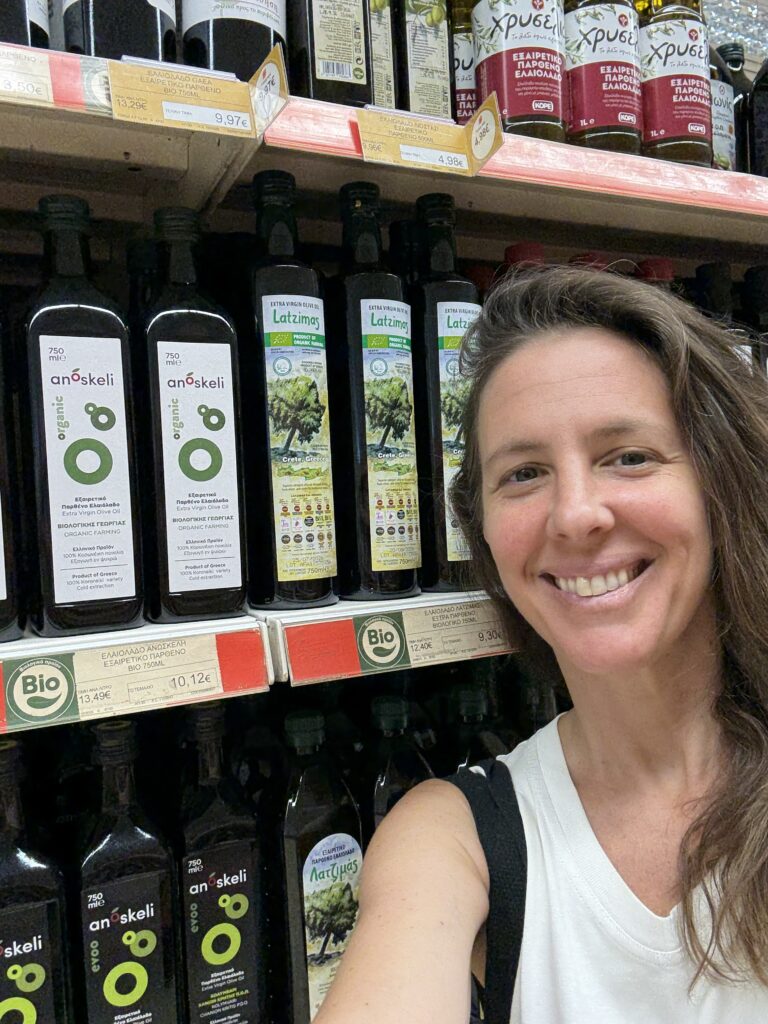

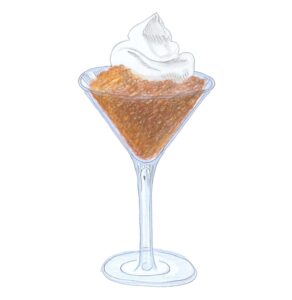




 in your life?
in your life?

